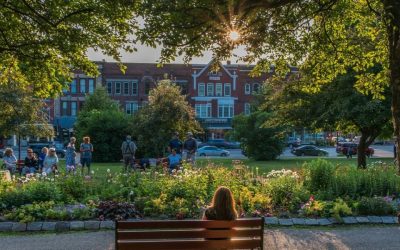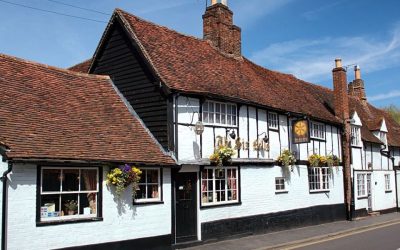Mews houses, with their charming and often picturesque facades, have a rich history that dates back several centuries. The term “mews” originally referred to a place where birds of prey were kept and trained for falconry, and it wasn’t until the 17th century that the concept of mews houses as we know them today began to emerge in London.
The earliest mews houses were built in the stable yards of grand homes belonging to the aristocracy and upper class as per Heart Home Mag. These properties were typically located in the affluent districts of London, such as Mayfair and Belgravia. The word “mews” was adopted for these stables because of their connection to the royal falconry mews established by Richard II in the late 14th century. The stables were often tucked away in alleys or lanes behind the main residences, providing a secluded and private space for the horses and carriages.
As the industrial revolution progressed in the 18th and 19th centuries, the demand for urban housing increased, and the cityscape began to transform. Mews houses evolved from being merely functional stables to becoming living quarters for servants, coachmen, and stable hands who served the affluent families residing in the main houses. The architecture of mews houses reflected this transition, with many featuring charming cobbled courtyards and distinctive carriage entrances.
In the early 20th century, changes in transportation and the decline of horse-drawn carriages led to a decline in the need for traditional mews houses. Many of these properties fell into disrepair or were repurposed for different uses. However, in the latter half of the 20th century, there was a renewed interest in preserving and revitalizing historic urban spaces. Mews houses, with their unique character and central locations, became popular targets for restoration and redevelopment.
During this period, mews houses were often converted into desirable residences with modern amenities while retaining their historic charm. The cobbled streets and architectural details were preserved, creating a blend of old-world character and contemporary comfort. The resurgence of interest in mews houses was part of a broader movement to revitalize historic neighbourhoods and retain a sense of the past in rapidly changing urban environments.
Today, mews houses are highly sought after for their distinctive architecture, central locations, and connection to history. They have become symbols of urban regeneration and preservation, showcasing the adaptive reuse of historical structures in the context of modern living. The appeal of mews houses lies not only in their aesthetic charm but also in their ability to offer a unique living experience that bridges the gap between past and present, providing a glimpse into the rich history of urban development in cities like London.
What happened after the decline of the horse and carriage?
The decline of horse-drawn transportation and the advent of the automobile played a pivotal role in reshaping the function of mews houses. As horses and carriages lost their prominence in daily life, the need for large stable spaces diminished. Many mews houses, no longer serving as functional stables, fell into neglect or were repurposed for alternative uses. Some were converted into storage spaces, workshops, or even small-scale industrial units. The architectural features that once catered to horse-drawn carriages, such as high ceilings and wide entrances, became obsolete.
However, the mid-20th century witnessed a renewed interest in historical preservation and a growing appreciation for the unique character of mews houses. Urban planners and architects recognized the potential of these structures to contribute to the cultural identity of neighborhoods and sought to integrate them into redevelopment projects. The distinctive architectural elements of mews houses, including cobbled streets, arched doorways, and wrought-iron gates, became features to be celebrated rather than discarded.
In the latter part of the 20th century and into the 21st century, mews houses experienced a resurgence in popularity. Urban dwellers, drawn to the charm and character of these historic properties, began investing in their restoration. Preservationists worked to maintain the integrity of the original architecture while updating interiors to meet contemporary living standards. The result was a harmonious blend of old and new—a marriage of historic charm with modern comfort.
One key aspect of the renewed interest in mews houses was their prime urban locations. Many mews developments were situated in the heart of major cities, offering a unique blend of privacy and centrality. The secluded nature of mews houses, set back from main thoroughfares, provided a quiet retreat from the hustle and bustle of urban life. Simultaneously, their proximity to city centers made them highly desirable for individuals seeking both historical charm and convenience.
The transformation of mews houses into stylish residences also contributed to a shift in the cultural perception of these properties. Once associated with the working-class labor required for horse care and carriage maintenance, mews houses evolved into symbols of urban luxury. The adaptive reuse of these historic structures became a testament to the resilience of architectural heritage in the face of changing societal needs.
In conclusion, the history of mews houses is a tale of adaptation and transformation. From their origins as stables for the aristocracy to their resurgence as coveted urban dwellings, mews houses have witnessed and mirrored the evolving dynamics of urban life. Today, these charming residences stand as living artifacts, testaments to the ability of historical structures to find new purpose and relevance in the modern world.


